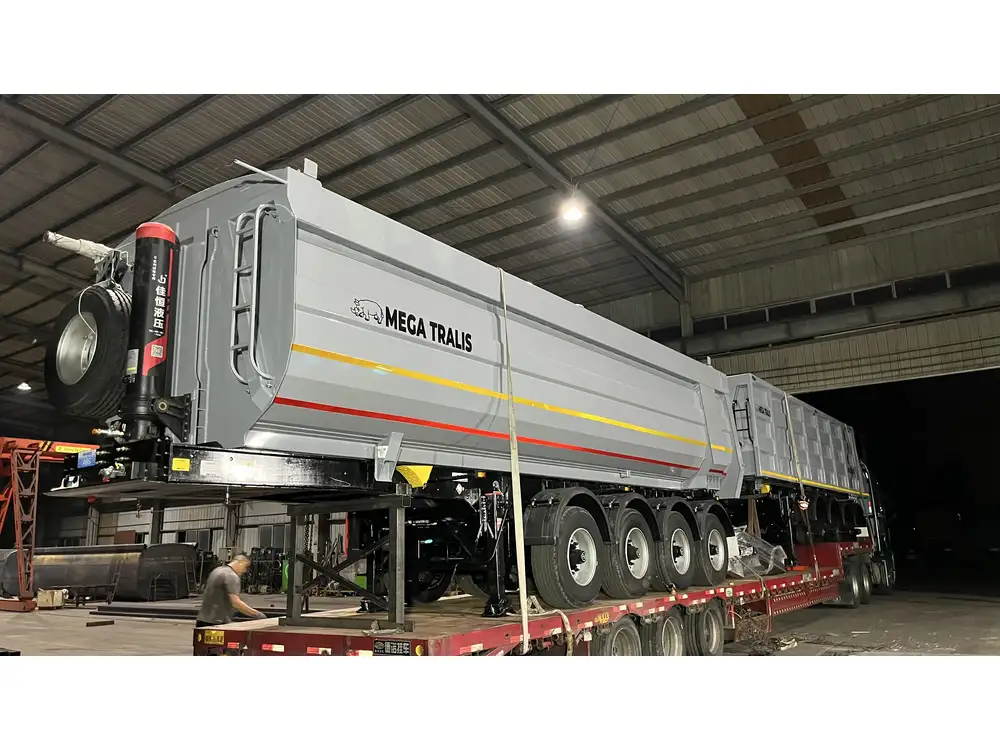When delving into the logistics and transportation industries, one of the pivotal questions often arises: How much is a new semi-trailer? The answer isn’t straightforward due to the myriad factors influencing semi-trailer costs. In this guide, we will dissect the variables that impact pricing, outline the different types of semi-trailers available, and provide insights into budgeting effectively.
Understanding the Costs of a New Semi-Trailer
1. Initial Purchase Price
The purchase price of a new semi-trailer varies significantly based on design, materials, and intended use. On average, you can expect prices to range from $20,000 to $50,000. Here’s how certain features and specifications can influence this:
| Type of Semi-Trailer | Average Price Range |
|---|---|
| Standard Flatbed | $20,000 – $30,000 |
| Refrigerated (Reefer) | $25,000 – $55,000 |
| Dry Van | $30,000 – $50,000 |
| Lowboy | $35,000 – $80,000 |
| Tanker | $25,000 – $60,000 |
Each type of trailer comes with distinct advantages and specialized applications, which in turn affects its market price.

2. Factors Influencing the Price of Semi-Trailers
Material Composition
Semi-trailers can be constructed from various materials, primarily steel and aluminum. Aluminum trailers, while lighter and resistant to rust, can be 10-20% more expensive than their steel counterparts. However, their durability and fuel efficiency make them a cost-effective choice in the long run.
Trailer Size and Configuration
The dimensions and configuration also affect the overall price. A standard 53-foot trailer may be priced higher than a 48-foot trailer depending on its design and the additional features you require, such as:
- Additional Axles: More axles allow for better load distribution and handling but also increase costs.
- Ramp and Liftgate Options: Those features add convenience but do bump up the initial investment.

Brand and Warranty
Well-established brands often offer products with better warranties, customer support, and resale values. Investing in a reliable brand might mean spending more upfront but ensures viability and performance over the trailer’s lifespan.
Customization Options
Tailoring features like paint, interior loading systems, and enhanced security devices can significantly affect the price. Custom-built trailers might surpass the basic model prices by thousands, making it essential to weigh your needs against your budget.
3. Ongoing Costs Beyond Purchase Price
While the purchase price is critical, total cost ownership should always be evaluated. Components to consider include:
- Insurance: Ongoing insurance premiums can add additional monthly costs ranging from $1,500 to $3,000 per year.
- Maintenance and Repairs: Routine maintenance costs can accumulate over time; budgeting $1,000 – $2,500 annually for maintenance is advisable.
- Fuel Efficiency: The load factor will directly impact mileage and operational costs. Lightweight models often result in better fuel economy.
- Taxes and Registration: State-specific taxes and registration fees can vary significantly.

4. Financing Your Semi-Trailer
Purchasing a new semi-trailer is a considerable investment, and many opt for financing. Here are avenues available to consider:
- Lease Options: Leasing can lower initial cash outlays but may involve mileage limits and other restrictions.
- Traditional Loans: Banks or credit unions offer loans that allow for ownership but require down payments and monthly installments.
- Manufacturer Financing: Manufacturers often provide financing options with promotional rates.
The choice of financing can have a substantial impact on the overall cost of ownership. Be sure to analyze all options before making a decision.
Exploring Different Types of Semi-Trailers
Understanding the different types of semi-trailers can help inform your buying decision based on your logistical needs.
1. Flatbed Trailers
Typically used for transporting large and heavy items, flatbed trailers are versatile. Their open design makes loading and unloading a breeze. Though cost-effective, securing cargo requires additional investment in tarping systems or chains.

2. Refrigerated Trailers (Reefers)
Essential for transporting perishable goods, refrigerated trailers are equipped with climate control systems. This results in higher costs but is indispensable for food safety in logistics.
3. Dry Van Trailers
Common in freight transport, dry van trailers protect cargo with solid walls and roofs. Their price point falls on the mid to high end, but they offer excellent durability and safety features.
4. Lowboy Trailers
Ideal for hauling heavy equipment and machinery, lowboy trailers provide lower centers of gravity. Their specialized design raises the price due to their specific functionality.

5. Tank Trailers
Essential for liquid transportation, tank trailers come in various configurations depending on the material being transported. Knowledge of DOT regulations will be crucial in procurement due to compliance issues.
Key Questions to Consider When Purchasing a Semi-Trailer
Making an informed choice when purchasing a semi-trailer requires consideration of several questions:
What is my primary cargo type?
- Understanding the specific mobility necessities influences the type of trailer to invest in.
What is the anticipated usage frequency?
- Heavy-duty models may suit frequent users, while casual operators can consider lighter, lower-cost options.
Am I willing to invest in custom features?
- Decide upfront how essential certain custom features are versus sticking to more stripped-down models.
What maintenance plan should I implement?
- A proactive maintenance strategy can significantly reduce long-term ownership costs.
How do I ensure compliance with local regulations?
- Specific licenses and inspections might be necessary, which can affect overall lead time and cost of acquisition.
Conclusion
In summary, the question “How much is a new semi-trailer?” encompasses a wealth of variables suggesting that the total cost extends far beyond the sticker price. By systematically assessing different types, ongoing costs, financing options, and crucial questions surrounding your specific needs, we can guide you toward making an informed purchasing decision.
As our world increasingly depends on robust logistics systems, choosing the right semi-trailer not only facilitates optimal transport solutions but also drives operational efficiencies and cost-effectiveness for your business. Before investing, consider these insights to ensure your semi-trailer aligns seamlessly with your operational goals.



